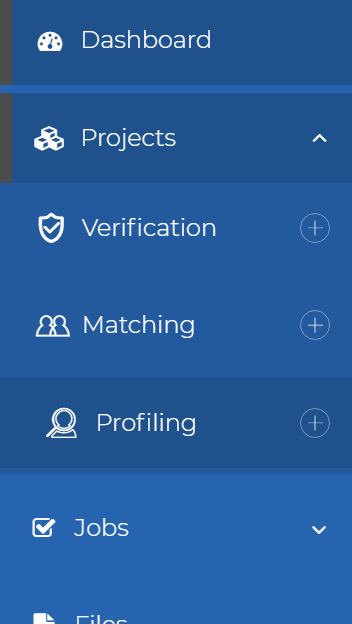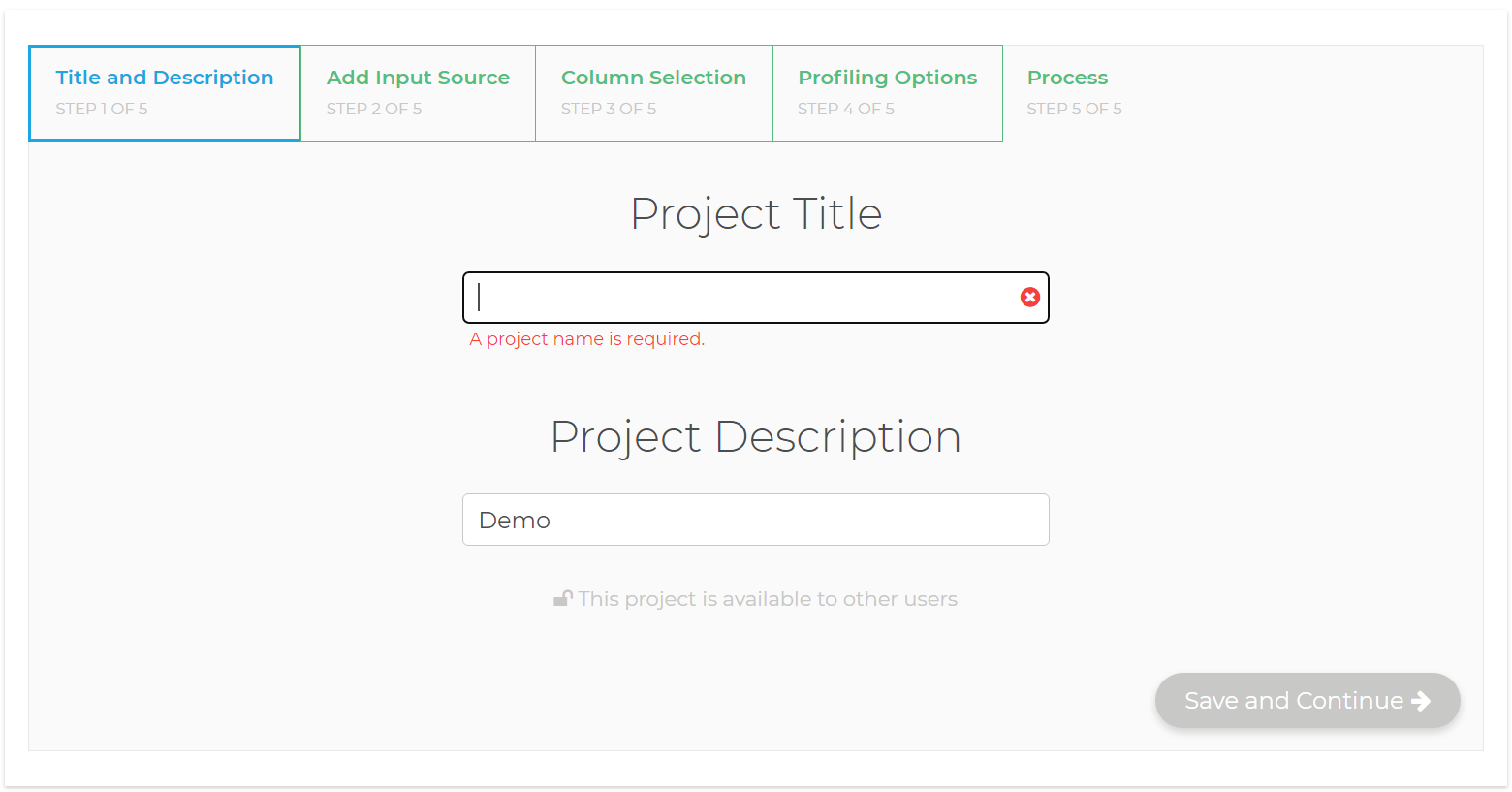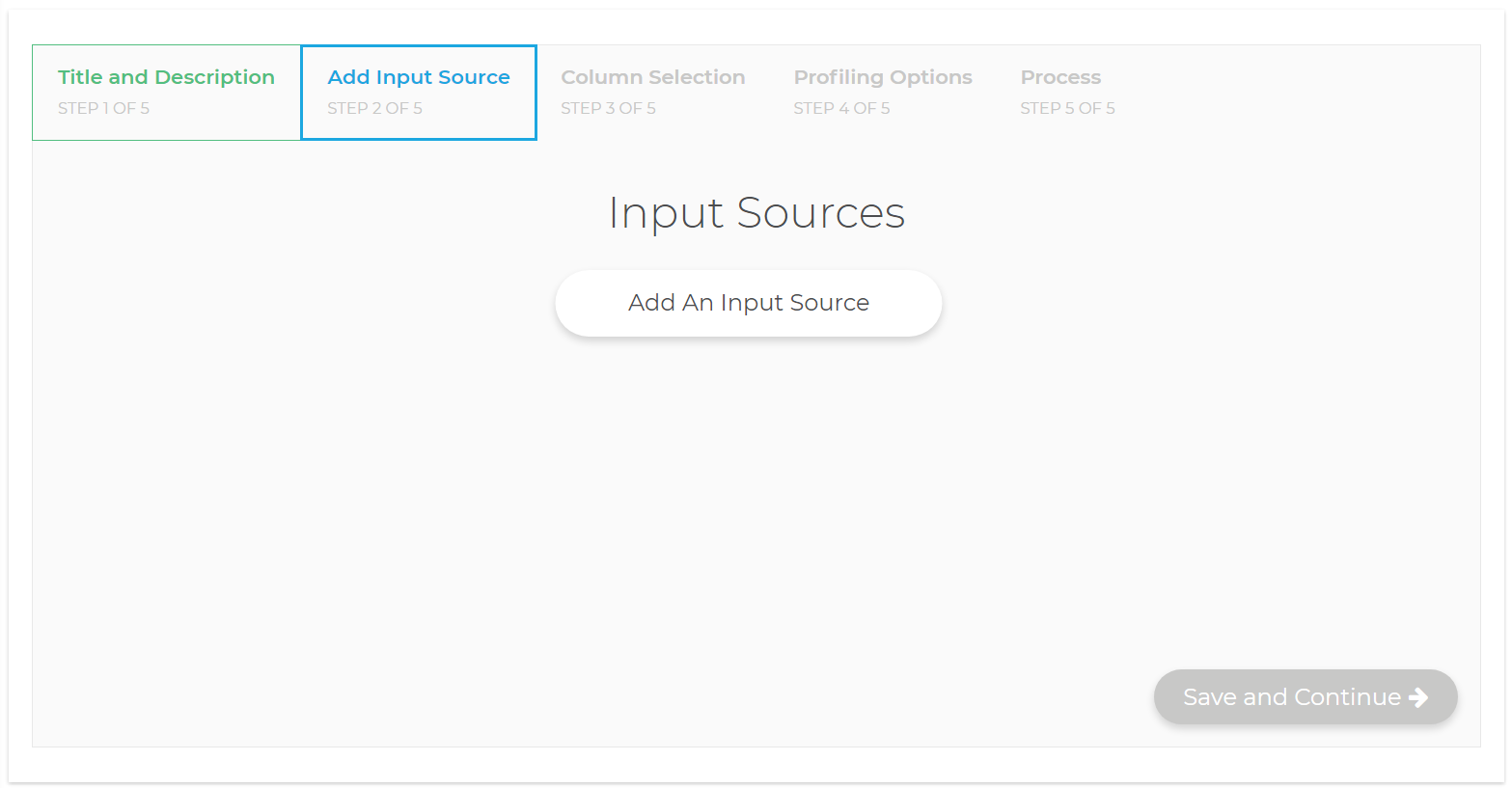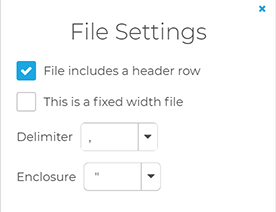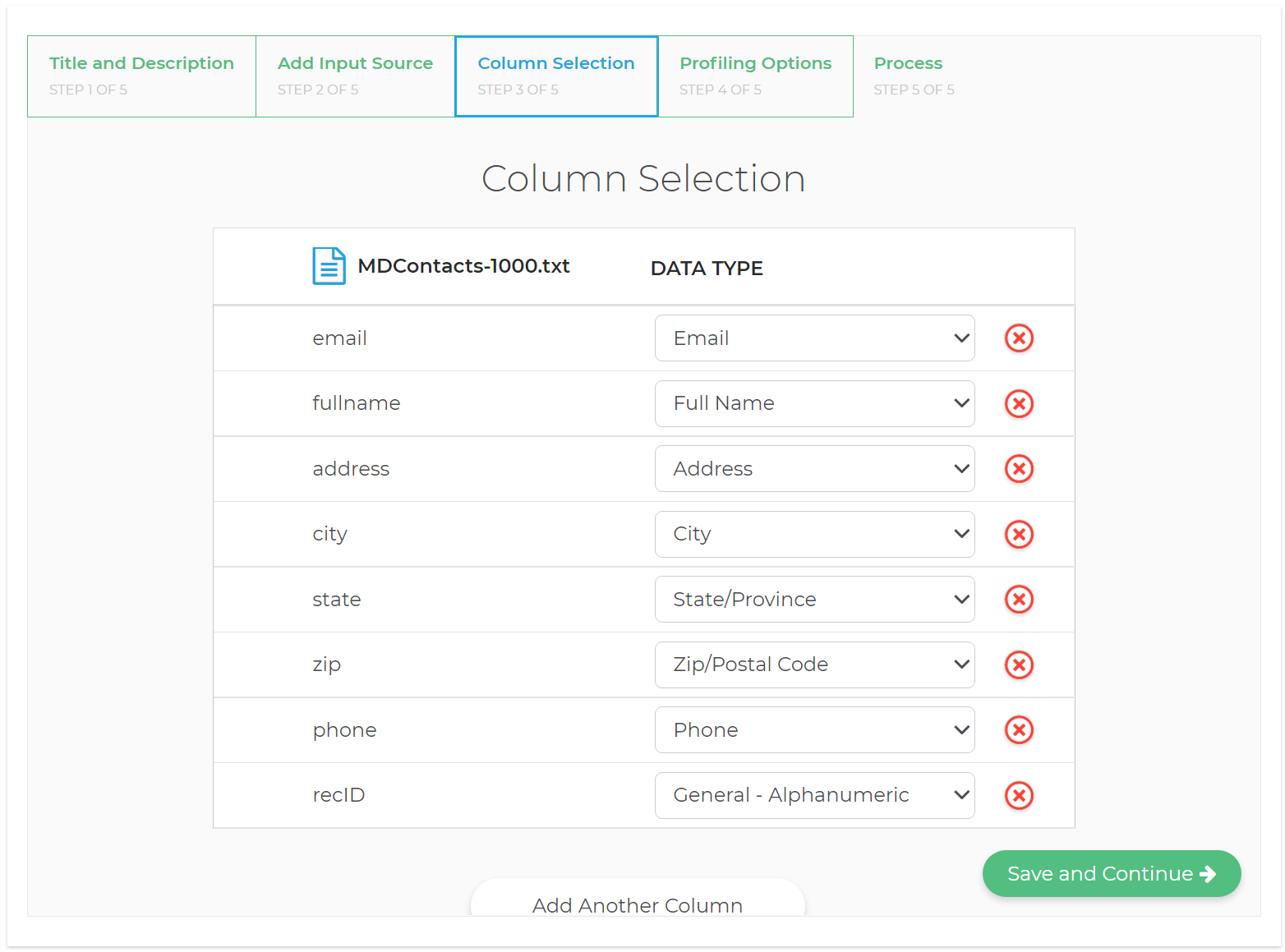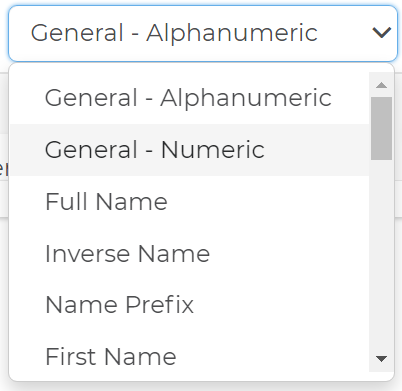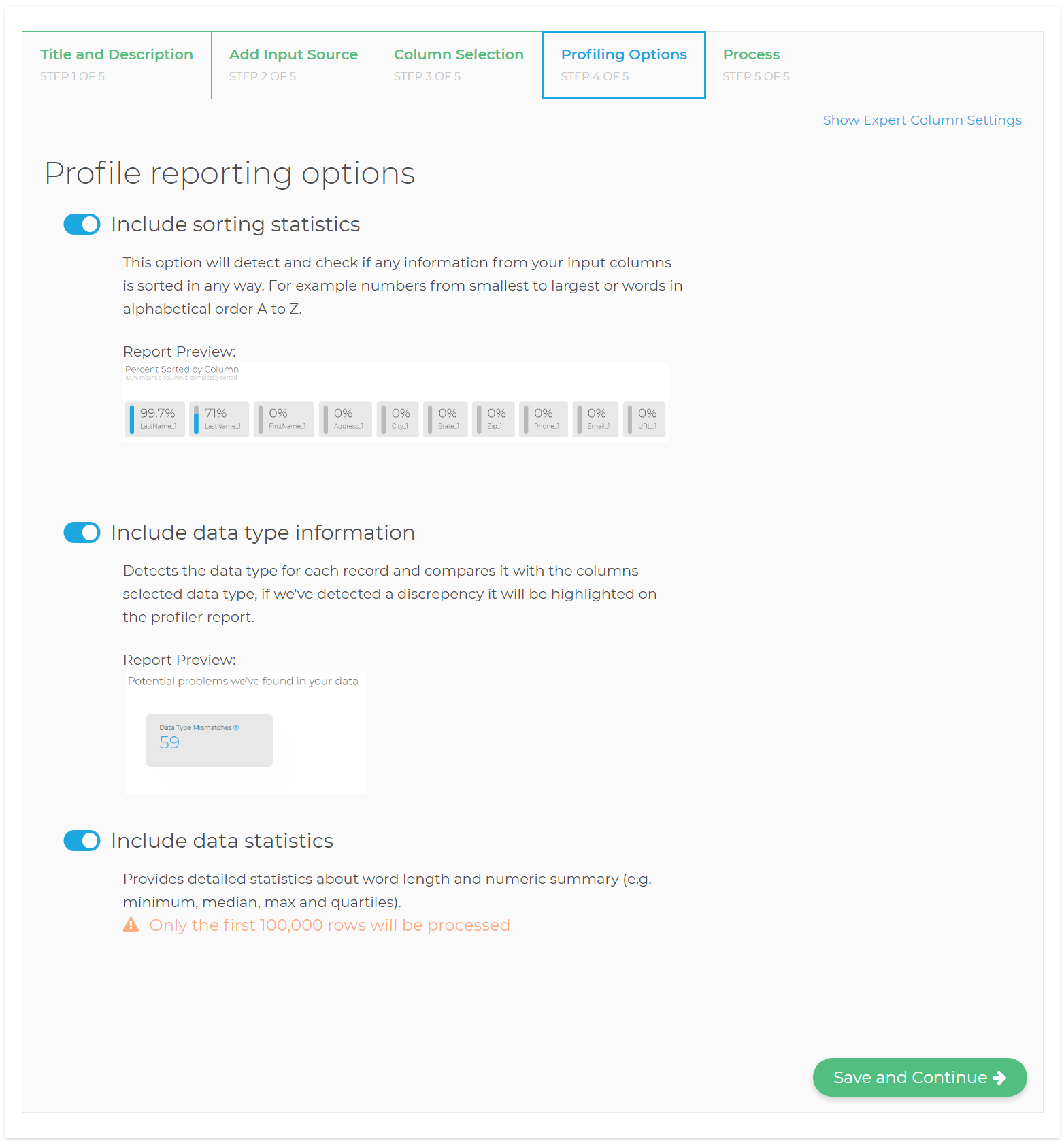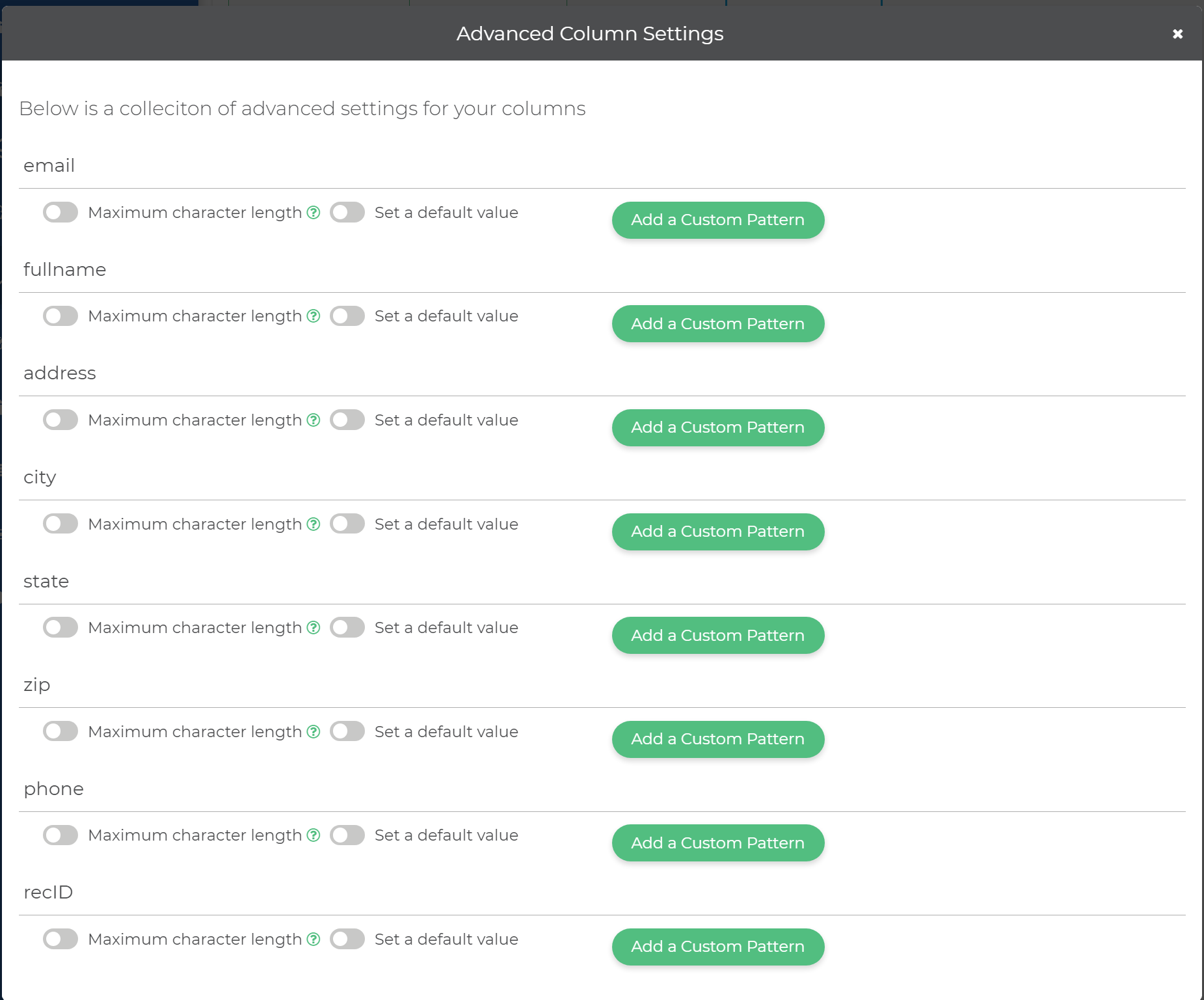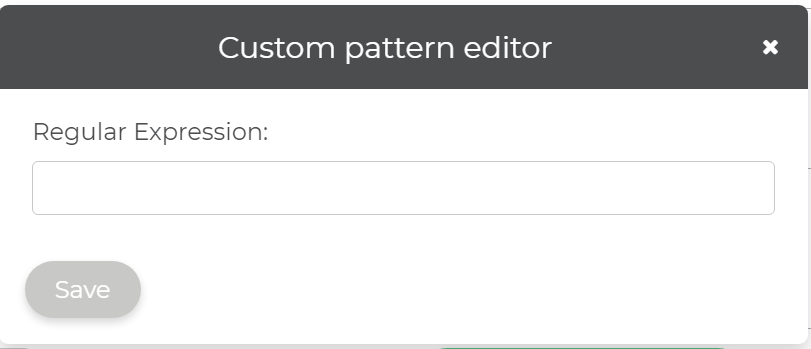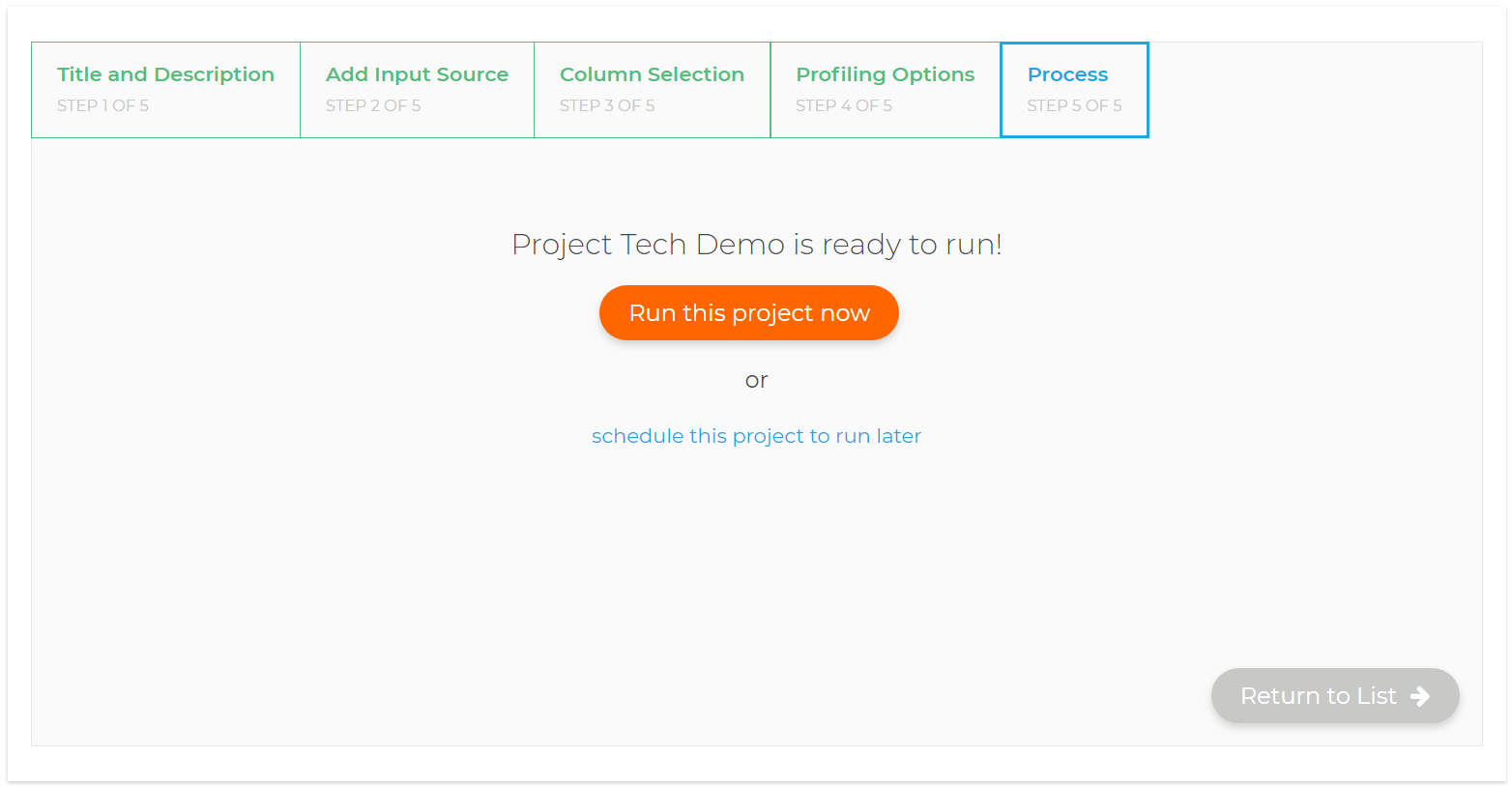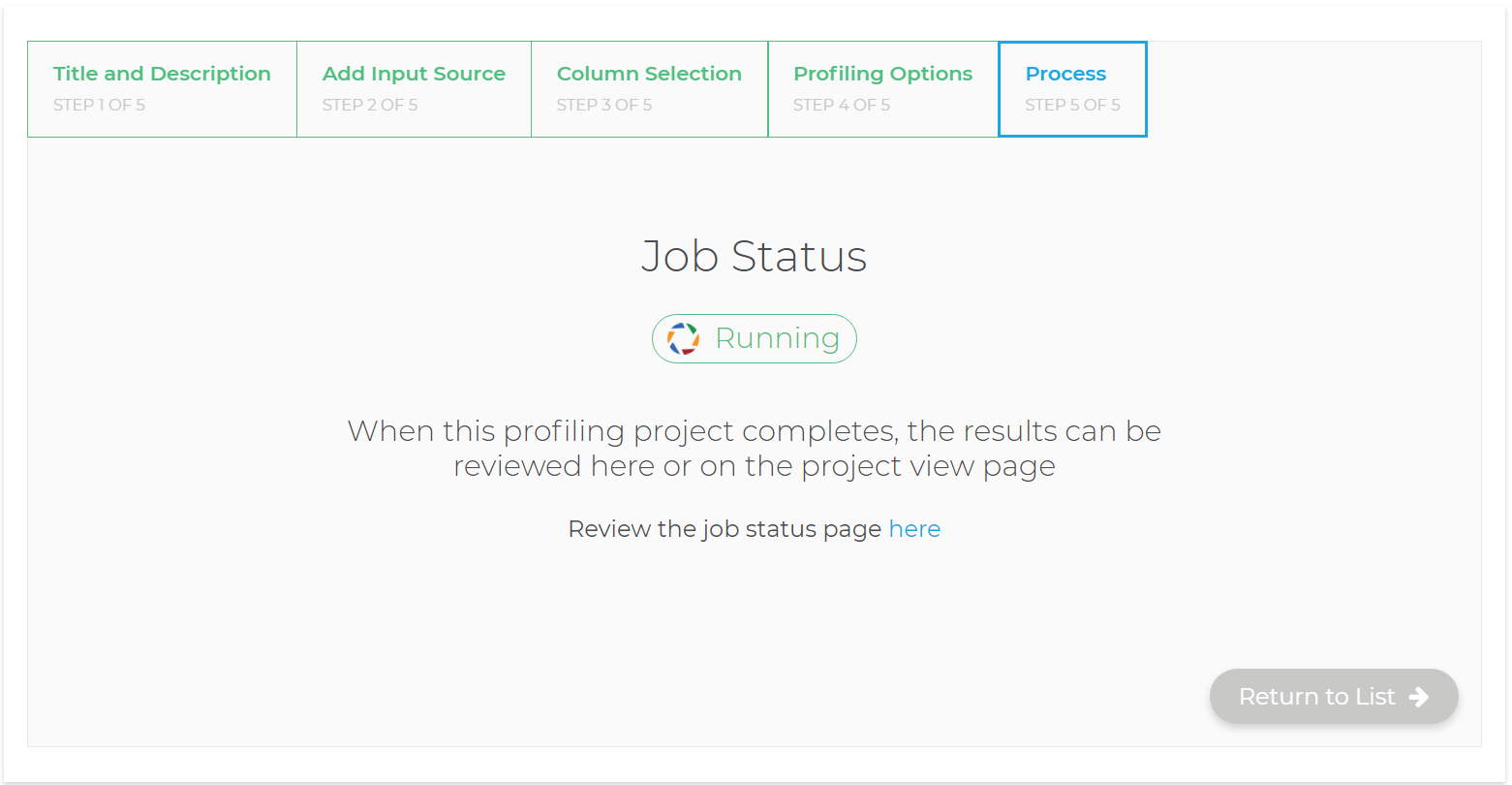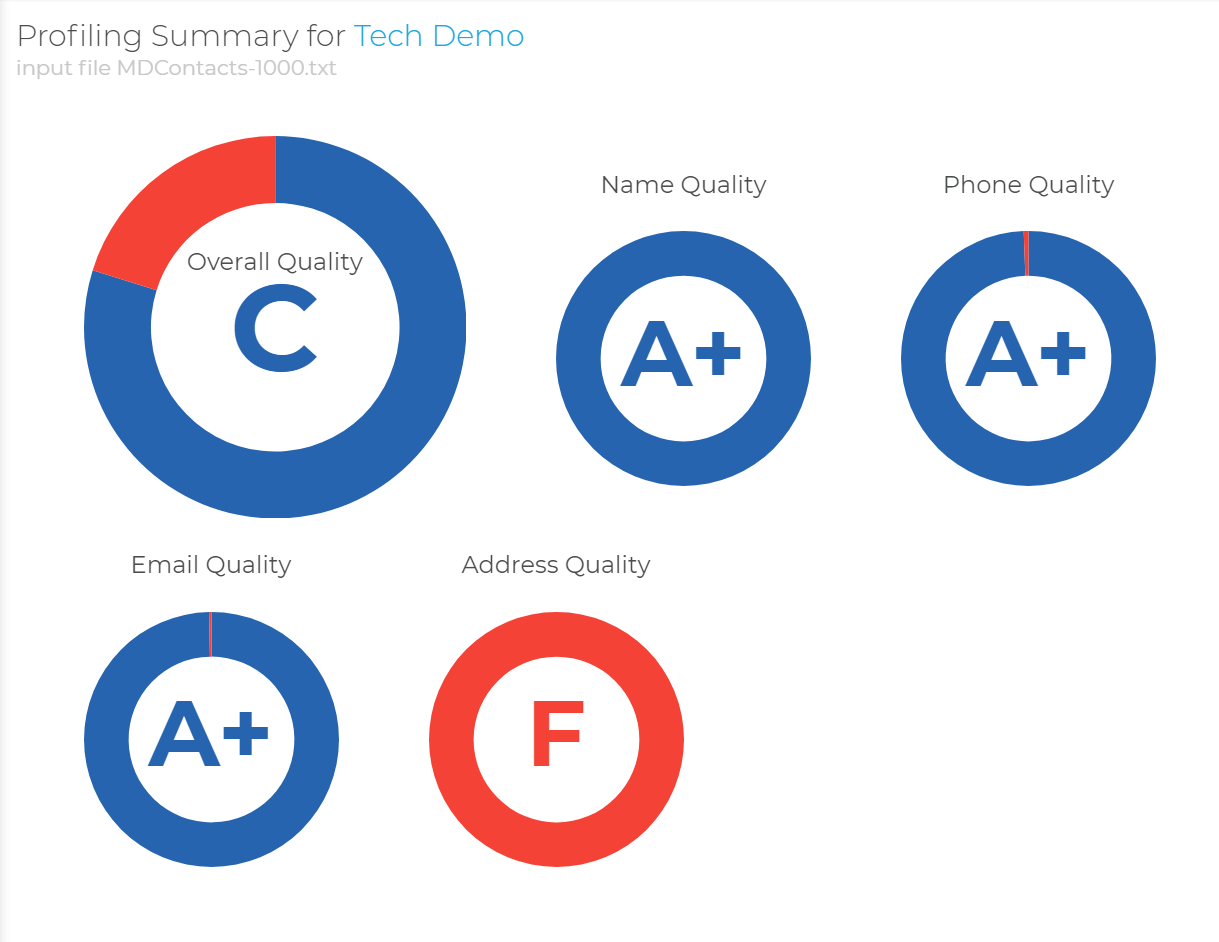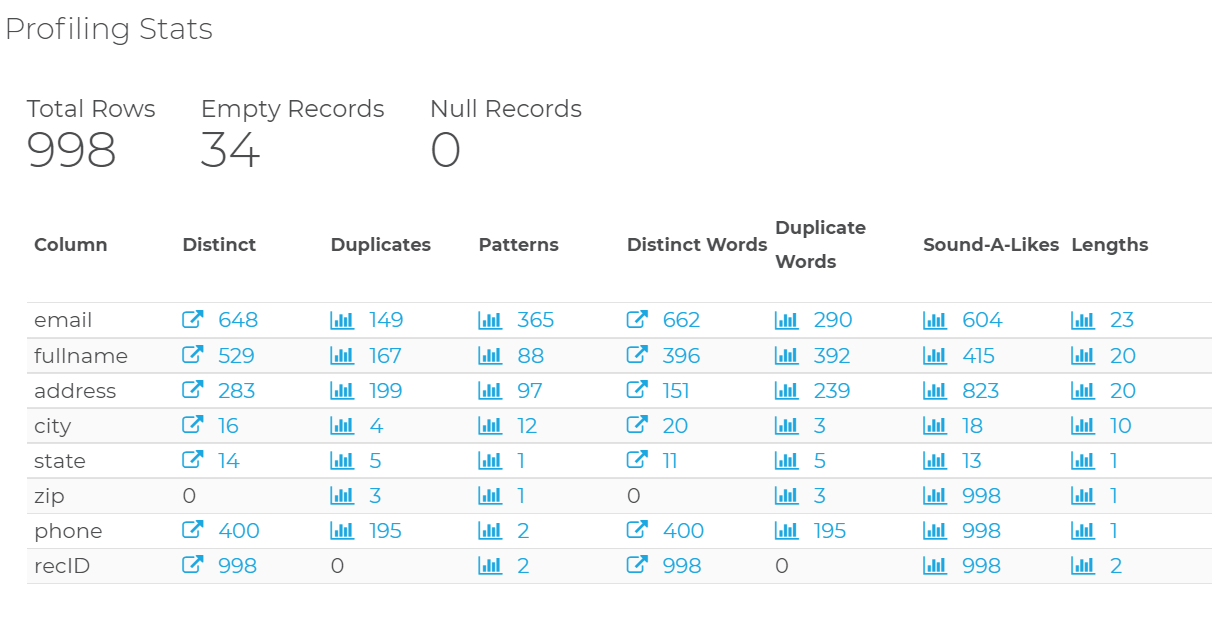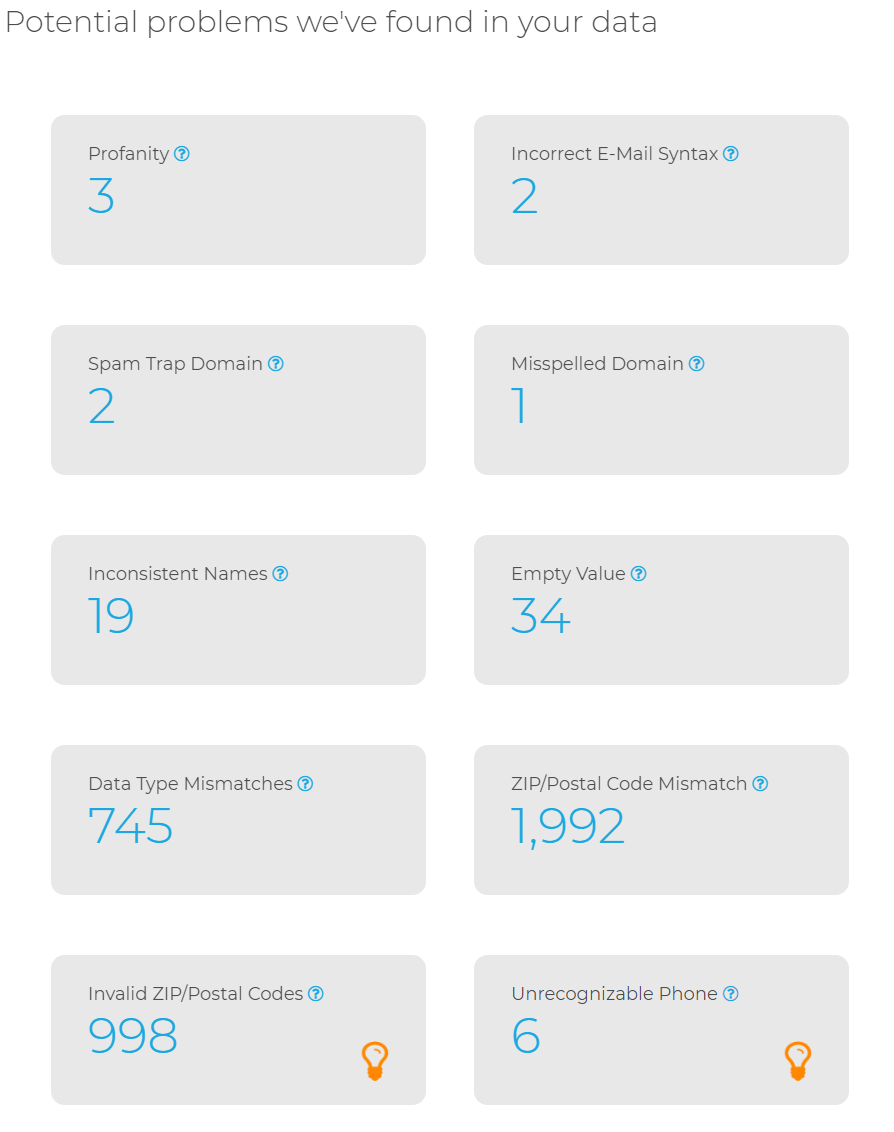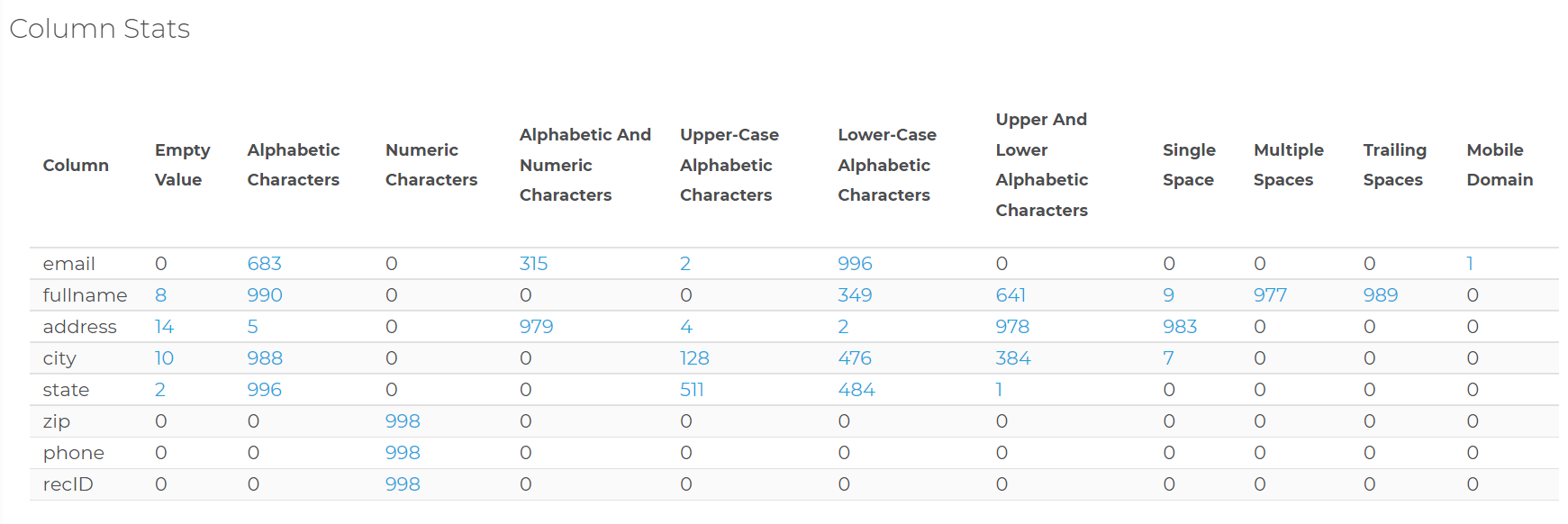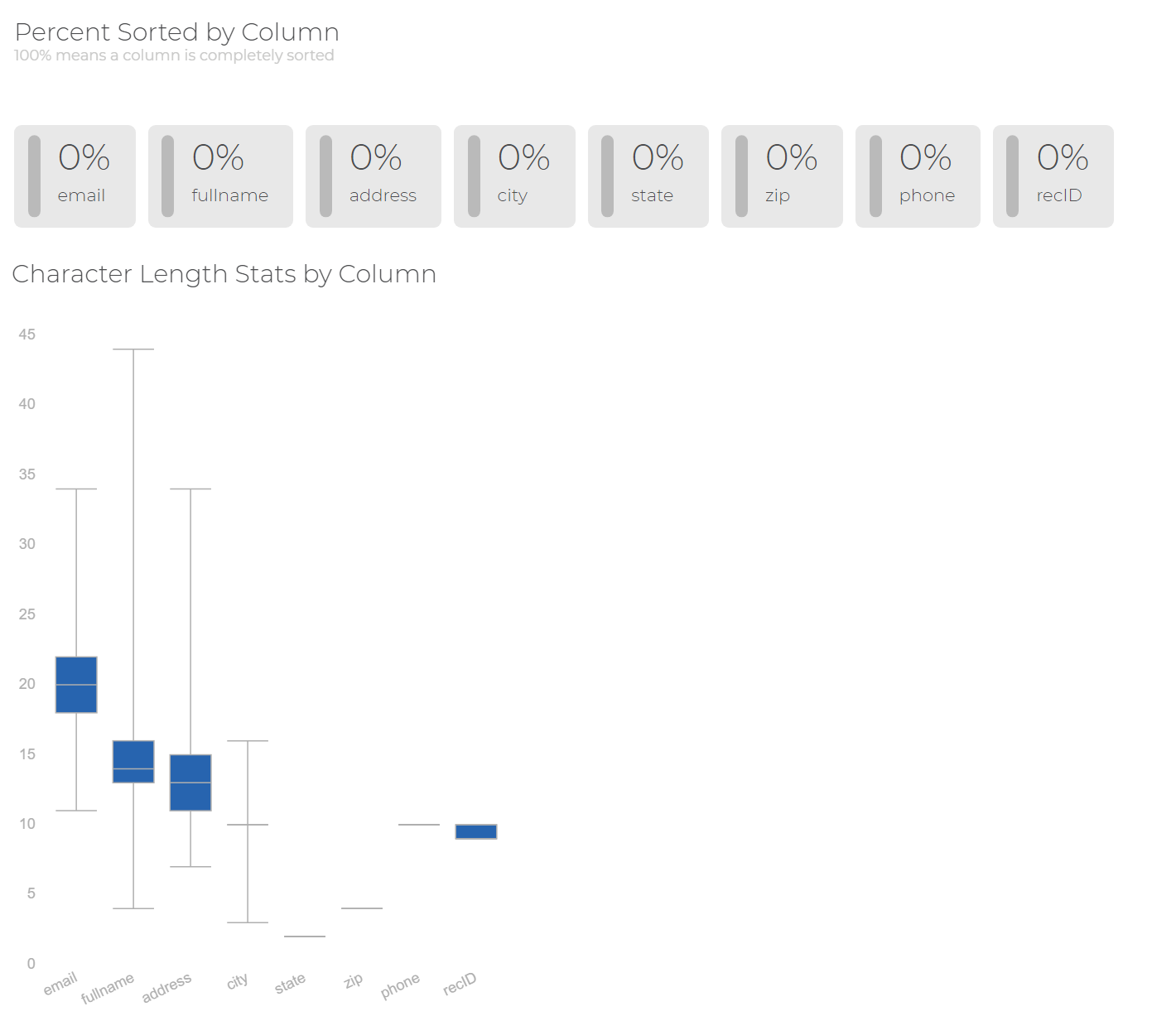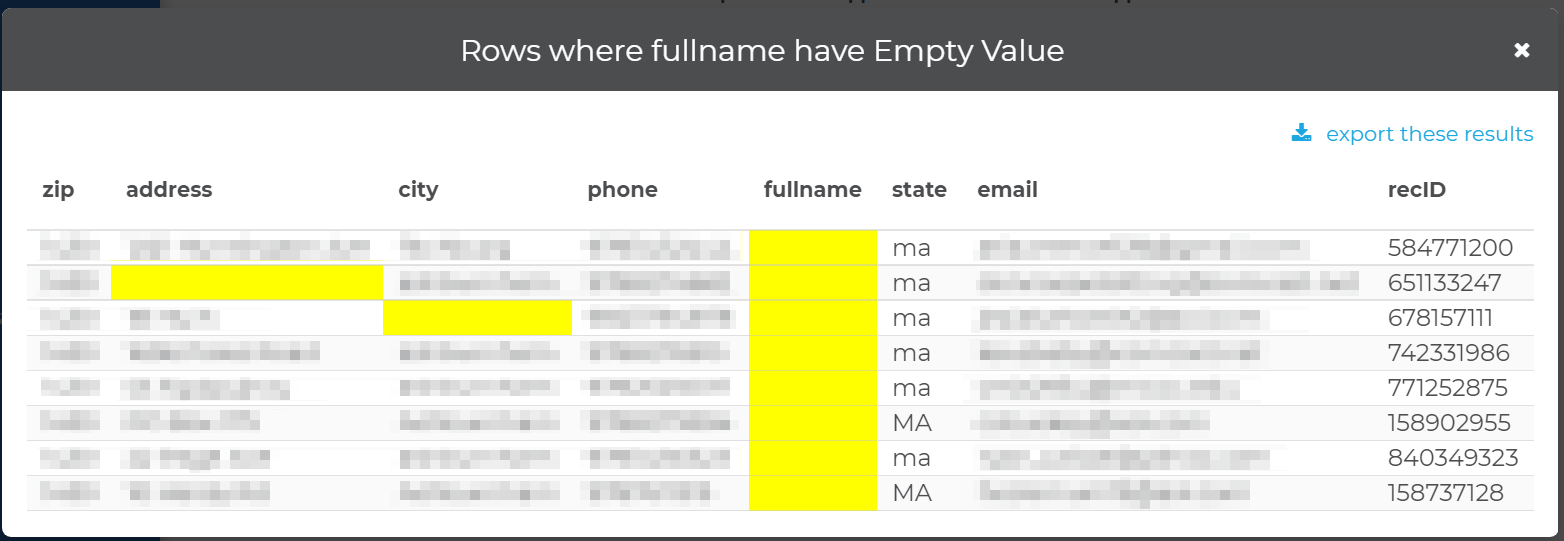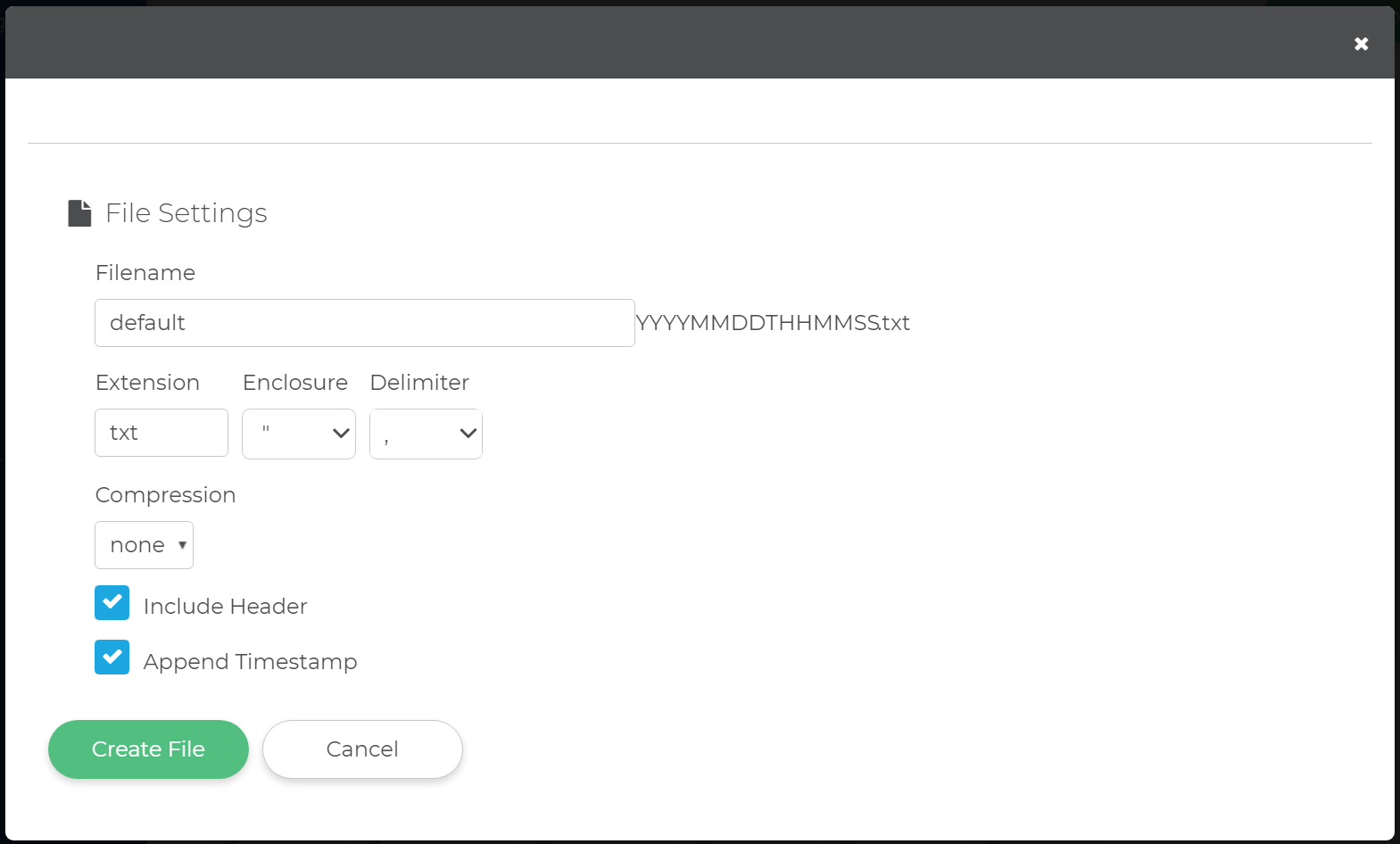Unison:Profiler: Difference between revisions
Created page with "{{UnisonNav |ServicesCollapse= }} {{CustomTOC}} The Unison by Melissa Profiling Project can profile your data and give you insights into your data quality. ==Getting Star..." |
No edit summary |
||
| Line 10: | Line 10: | ||
==Getting Started== | ==Getting Started== | ||
[[File:UNProfiler_MenuProfiling.png|200px|link=]] | :[[File:UNProfiler_MenuProfiling.png|200px|link=]] | ||
The Profiling Project is located under Projects > Profiling. | The Profiling Project is located under Projects > Profiling. | ||
| Line 25: | Line 25: | ||
==Title and Description== | ==Title and Description== | ||
[[File:UNProfiler_Title.png|800px|link=]] | :[[File:UNProfiler_Title.png|800px|link=]] | ||
The first step to a Profiling Project with Unison is to give it a name. Enter a '''Project Title''' and optionally a '''Project Description'''. | The first step to a Profiling Project with Unison is to give it a name. Enter a '''Project Title''' and optionally a '''Project Description'''. | ||
| Line 33: | Line 33: | ||
==Add Input Source== | ==Add Input Source== | ||
[[File:UNProfiler_Input.png|800px|link=]] | :[[File:UNProfiler_Input.png|800px|link=]] | ||
The second step is to add an Input Source. | The second step is to add an Input Source. | ||
| Line 40: | Line 40: | ||
<h3 class="productfield">Preview Input</h3> | <h3 class="productfield">Preview Input</h3> | ||
[[File:Unison_2_PreviewInput.png|600px|link=]] | ::[[File:Unison_2_PreviewInput.png|600px|link=]] | ||
:Once you select a file, the '''Preview Input''' window will open. This will be automatically populated based on the source file. | :Once you select a file, the '''Preview Input''' window will open. This will be automatically populated based on the source file. | ||
| Line 46: | Line 46: | ||
<h3 class="productfield">File Settings</h3> | <h3 class="productfield">File Settings</h3> | ||
[[File:Unison_2_FileSettings.png|link=]] | ::[[File:Unison_2_FileSettings.png|link=]] | ||
:Under File Settings you can modify the settings for your file. This includes specifying if your file has a header row, the type of delimiter, and enclosure. | :Under File Settings you can modify the settings for your file. This includes specifying if your file has a header row, the type of delimiter, and enclosure. | ||
| Line 52: | Line 52: | ||
==Column Selection== | ==Column Selection== | ||
[[File:UNProfiler_ColumnSelection.png|800px|link=]] | :[[File:UNProfiler_ColumnSelection.png|800px|link=]] | ||
The third step is Column Selection. Here you choose the data types for your columns. | The third step is Column Selection. Here you choose the data types for your columns. | ||
[[File:UNProfiler_ColumnTypes.png|200px|link=]] | :[[File:UNProfiler_ColumnTypes.png|200px|link=]] | ||
The profiler will try to match your columns to a corresponding data type, but you may have to edit this and choose a desired data type. | The profiler will try to match your columns to a corresponding data type, but you may have to edit this and choose a desired data type. | ||
| Line 67: | Line 67: | ||
==Profiling Options== | ==Profiling Options== | ||
[[File:UNProfiler_ProfilingOptions.png|800px|link=]] | :[[File:UNProfiler_ProfilingOptions.png|800px|link=]] | ||
The fourth step is Profiling Options. Here you specify the profile reporting options you want to include. | The fourth step is Profiling Options. Here you specify the profile reporting options you want to include. | ||
| Line 74: | Line 74: | ||
:You can choose advanced column settings like maximum character length, default values or regular expressions for your columns if you click the '''Expert Column Settings''' button. | :You can choose advanced column settings like maximum character length, default values or regular expressions for your columns if you click the '''Expert Column Settings''' button. | ||
[[File:UNProfiler_ProfilingOptions-Advanced.png|800px|link=]] | ::[[File:UNProfiler_ProfilingOptions-Advanced.png|800px|link=]] | ||
[[File:UNProfiler_ProfilingOptions-CustomPattern.png|400px|link=]] | ::[[File:UNProfiler_ProfilingOptions-CustomPattern.png|400px|link=]] | ||
==Process== | ==Process== | ||
[[File:UNProfiler_Process-ReadytoRun.png|800px|link=]] | :[[File:UNProfiler_Process-ReadytoRun.png|800px|link=]] | ||
The fifth and final step is to simply '''Run this project now'''. | The fifth and final step is to simply '''Run this project now'''. | ||
[[File:UNProfiler_Process-StatusRunning.png|800px|link=]] | :[[File:UNProfiler_Process-StatusRunning.png|800px|link=]] | ||
[[File:UNProfiler_ProjectConfiguration.png|800px|link=]] | :[[File:UNProfiler_ProjectConfiguration.png|800px|link=]] | ||
After you click '''Run this project now''' you'll see the '''Job Status''' page. This will show you the progress of your profiling project as it runs. | After you click '''Run this project now''' you'll see the '''Job Status''' page. This will show you the progress of your profiling project as it runs. | ||
| Line 93: | Line 93: | ||
Once it is finished running, you can click '''Show me the results''' to view the final results. | Once it is finished running, you can click '''Show me the results''' to view the final results. | ||
[[File:UNProfiler_Results-Summary.png|700px|link=]] | :[[File:UNProfiler_Results-Summary.png|700px|link=]] | ||
Viewing the '''Profiling Summary''' will show you easy to read summary about the quality of your data. | Viewing the '''Profiling Summary''' will show you easy to read summary about the quality of your data. | ||
<h3 class="productfield">Profiler Stats</h3> | <h3 class="productfield">Profiler Stats</h3> | ||
[[File:UNProfiler_Results-Stats.png|800px|link=]] | ::[[File:UNProfiler_Results-Stats.png|800px|link=]] | ||
Further down you can get a detailed table of specific profiling stats. | :Further down you can get a detailed table of specific profiling stats. | ||
<h3 class="productfield">Potential Problems</h3> | <h3 class="productfield">Potential Problems</h3> | ||
[[File:UNProfiler_Results-Problems.png|500px|link=]] | ::[[File:UNProfiler_Results-Problems.png|500px|link=]] | ||
Under '''Potential Problems''' you'll have a list of potential problems in your data. You can click these and see further details. | :Under '''Potential Problems''' you'll have a list of potential problems in your data. You can click these and see further details. | ||
<h3 class="productfield">Column Stats</h3> | <h3 class="productfield">Column Stats</h3> | ||
[[File:UNProfiler_Results-ColumnStats1.png|800px|link=]] | ::[[File:UNProfiler_Results-ColumnStats1.png|800px|link=]] | ||
[[File:UNProfiler_Results-ColumnStats2.png|700px|link=]] | ::[[File:UNProfiler_Results-ColumnStats2.png|700px|link=]] | ||
Futher stats, sorting information and character length information is also available. | :Futher stats, sorting information and character length information is also available. | ||
<h3 class="productfield">Export Columns</h3> | |||
:You may want to export specific columns in your data for further processing. To do this you can click on the values in the '''Column Stats''' table to show the columns in question. | |||
::[[File:UNProfiler_Results-Export.png|800px|link=]] | |||
:From here you can click '''export these results''' to choose your export file settings and create a file. | |||
::[[File:UNProfiler_Results-ExportSettings.png|600px|link=]] | |||
[[Category:Unison by Melissa]] | [[Category:Unison by Melissa]] | ||
Revision as of 02:13, 3 February 2022
The Unison by Melissa Profiling Project can profile your data and give you insights into your data quality.
Getting Started
The Profiling Project is located under Projects > Profiling.
There are five main steps to a Profiling Project:
Click any of the links above to jump to that section or continue below.
Title and Description
The first step to a Profiling Project with Unison is to give it a name. Enter a Project Title and optionally a Project Description.
When you create these you can also check the Make this a private project box to do so.
Add Input Source
The second step is to add an Input Source.
These can be from a file on your computer or one you have previously uploaded. To upload a new file, drag it to the Drag file here or broswer box or click the browse link to open a system dialog to find the file you want to upload.
Preview Input
- Once you select a file, the Preview Input window will open. This will be automatically populated based on the source file.
- You can choose which columns to use by toggling them and change their HEADER names by entering a different name.
File Settings
- Under File Settings you can modify the settings for your file. This includes specifying if your file has a header row, the type of delimiter, and enclosure.
Column Selection
The third step is Column Selection. Here you choose the data types for your columns.
The profiler will try to match your columns to a corresponding data type, but you may have to edit this and choose a desired data type.
You can also click the x next to a field to exclude it.
Add Another Column
- You can choose to add another column by clicking the button at the bottom of the page.
Profiling Options
The fourth step is Profiling Options. Here you specify the profile reporting options you want to include.
Expert Column Settings
- You can choose advanced column settings like maximum character length, default values or regular expressions for your columns if you click the Expert Column Settings button.
Process
The fifth and final step is to simply Run this project now.
After you click Run this project now you'll see the Job Status page. This will show you the progress of your profiling project as it runs.
Once it is finished running, you can click Show me the results to view the final results.
Viewing the Profiling Summary will show you easy to read summary about the quality of your data.
Profiler Stats
- Further down you can get a detailed table of specific profiling stats.
Potential Problems
- Under Potential Problems you'll have a list of potential problems in your data. You can click these and see further details.
Column Stats
- Futher stats, sorting information and character length information is also available.
Export Columns
- You may want to export specific columns in your data for further processing. To do this you can click on the values in the Column Stats table to show the columns in question.
- From here you can click export these results to choose your export file settings and create a file.
